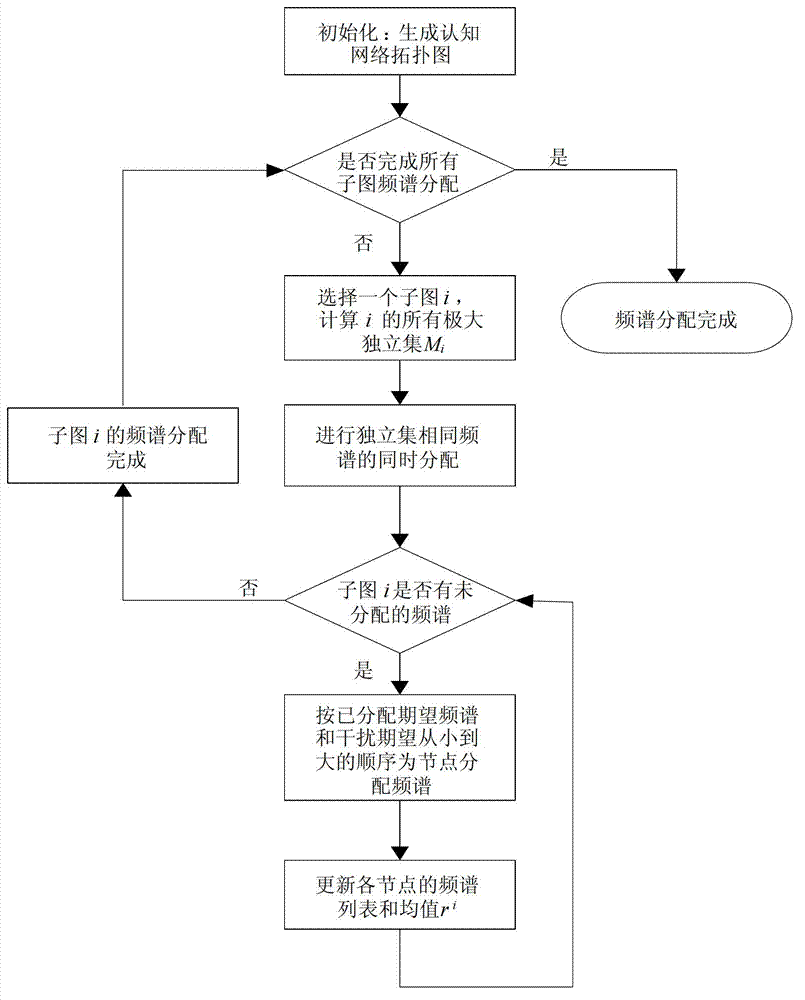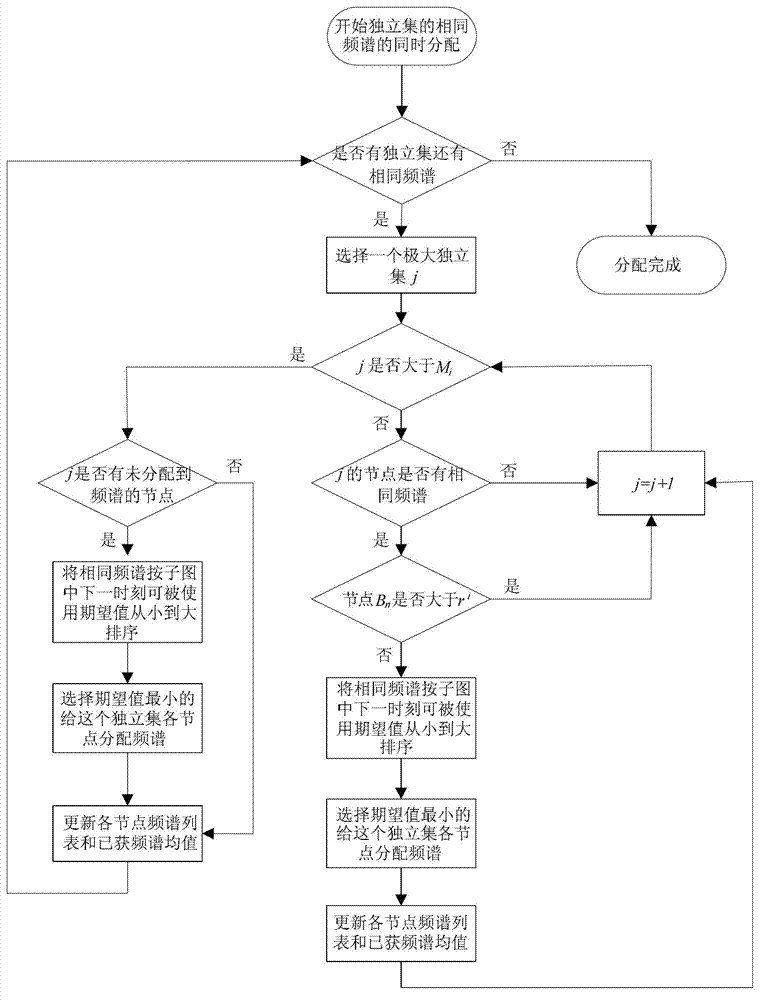Authorization channel switching probability-based maximal independent set frequency spectrum distribution method in cognitive radio
A technology of cognitive radio and maximal independent set, applied in the field of spectrum allocation, can solve the problem of not considering the negative impact of system performance, achieve good system fairness, reduce the number of interactions, and reduce allocation overhead.
- Summary
- Abstract
- Description
- Claims
- Application Information
AI Technical Summary
Problems solved by technology
Method used
Image
Examples
specific Embodiment approach 1
[0036] Specific implementation mode 1: In this implementation mode, the maximum independent set spectrum allocation method based on the authorized channel switching probability in the cognitive radio is implemented according to the following steps:
[0037] Step 1: Initialization; in the deployment area, the two-dimensional geographic coordinates of the authorized nodes and cognitive nodes are randomly generated; from the distribution topology of all cognitive nodes, the connected subgraphs of the cognitive system and the cognitive nodes are obtained The available spectrum list set of ;
[0038] The establishment condition of each connected subgraph is: the distance between two cognitive nodes in the graph is less than the sum of the interference radii of the two cognitive nodes, then there is an interference edge connecting the two cognitive nodes; If the distance between two cognitive nodes is greater than or equal to the sum of the interference radii of the two cognitive no...
specific Embodiment approach 2
[0045] Specific implementation mode two: the difference between this implementation mode and specific implementation mode one is: the specific process of the 3rd step is:
[0046] Step a: Determine whether the independent set of this subgraph i has the same spectrum available for simultaneous allocation; if there is the same spectrum available for simultaneous allocation, then perform step b; if there is no identical spectrum available for simultaneous allocation, the independent set of the same spectrum simultaneously The allocation process ends;
[0047] Step b: Choose an independent set j arbitrarily, starting from j=1, j>M i , then execute step e; j≤M i , to determine whether the nodes belonging to the independent set j have the same frequency spectrum available for simultaneous allocation, and perform step c;
[0048] If there are nodes belonging to independent set j that have the same frequency spectrum available for simultaneous allocation, then execute step d; if no ...
specific Embodiment approach 3
[0055] Specific embodiment three: the difference between this embodiment and specific embodiment one or two is: the 5th step is:
[0056] According to the allocated desired spectrum B n and interfere with expectations Assign spectrum to nodes in ascending order: press B first n Arranged in ascending order, B n equal, press Arrange in order from small to large; update the spectrum list of each node and the obtained spectrum mean value of the corresponding independent set nodeγ i ;
[0057] Among them, γ i The update of is calculated according to the formula (4);
[0058] Allocated Desired Spectrum B n Calculated according to formula (2);
[0059] interfere with expectations Calculate according to formula (3), and then execute the fourth step.
[0060]
[0061]
[0062] γi=min{Bn|n∈subgraph i} (4)
[0063] Among them, S n,m Indicates that spectrum m has been allocated to user n, and ∏ indicates the allocated spectrum set of user n; Ω n Represents the set of...
PUM
 Login to View More
Login to View More Abstract
Description
Claims
Application Information
 Login to View More
Login to View More - R&D
- Intellectual Property
- Life Sciences
- Materials
- Tech Scout
- Unparalleled Data Quality
- Higher Quality Content
- 60% Fewer Hallucinations
Browse by: Latest US Patents, China's latest patents, Technical Efficacy Thesaurus, Application Domain, Technology Topic, Popular Technical Reports.
© 2025 PatSnap. All rights reserved.Legal|Privacy policy|Modern Slavery Act Transparency Statement|Sitemap|About US| Contact US: help@patsnap.com



